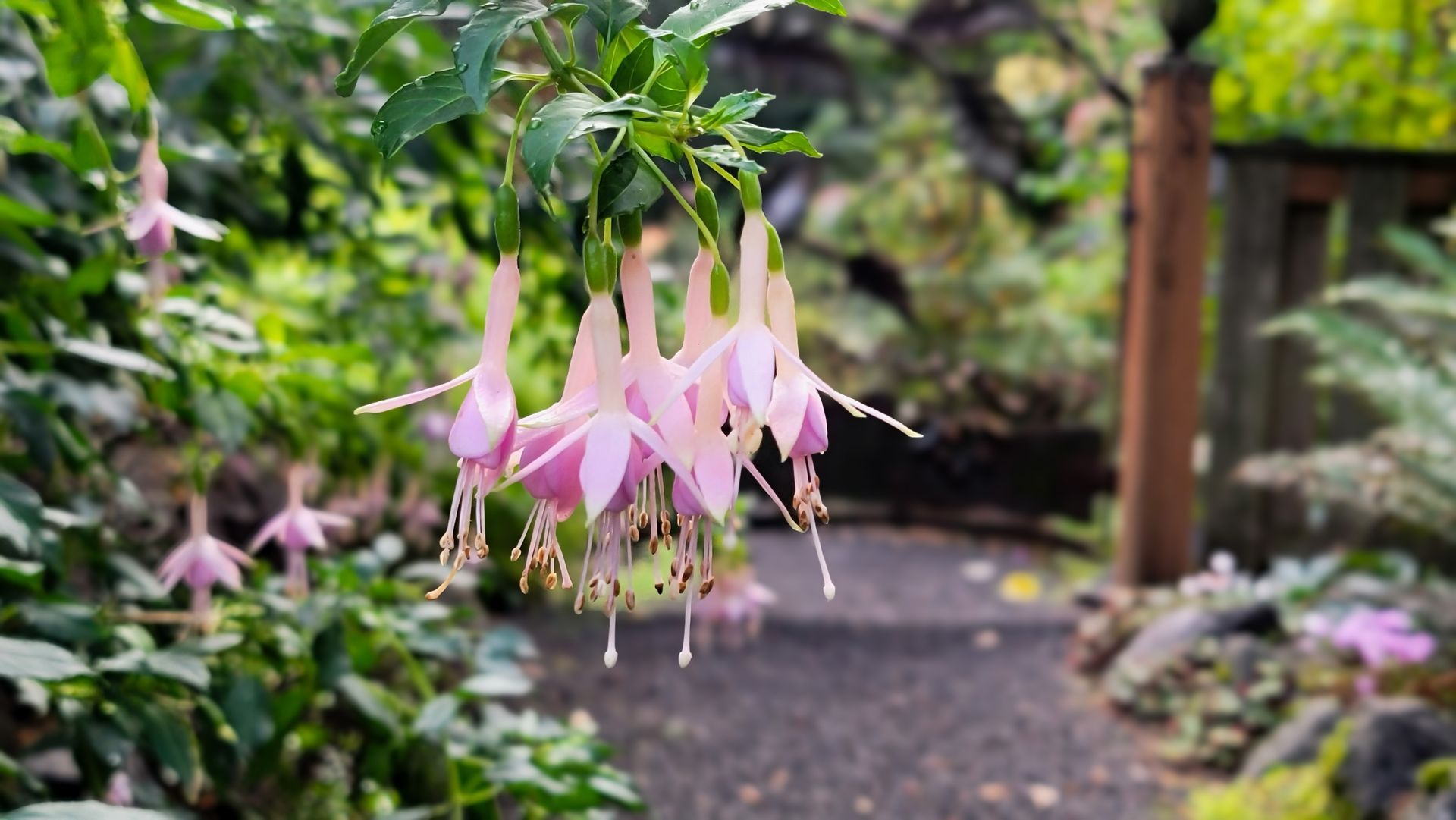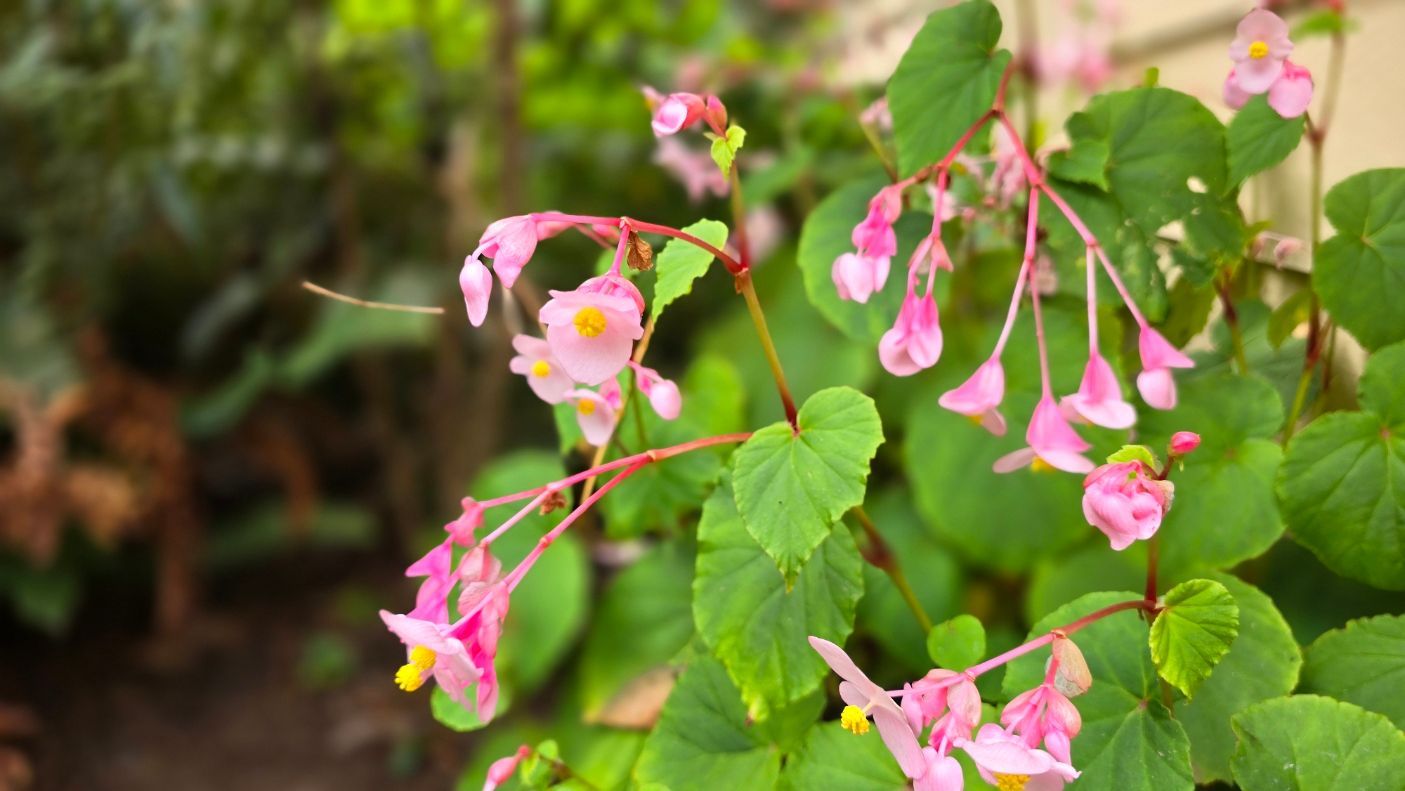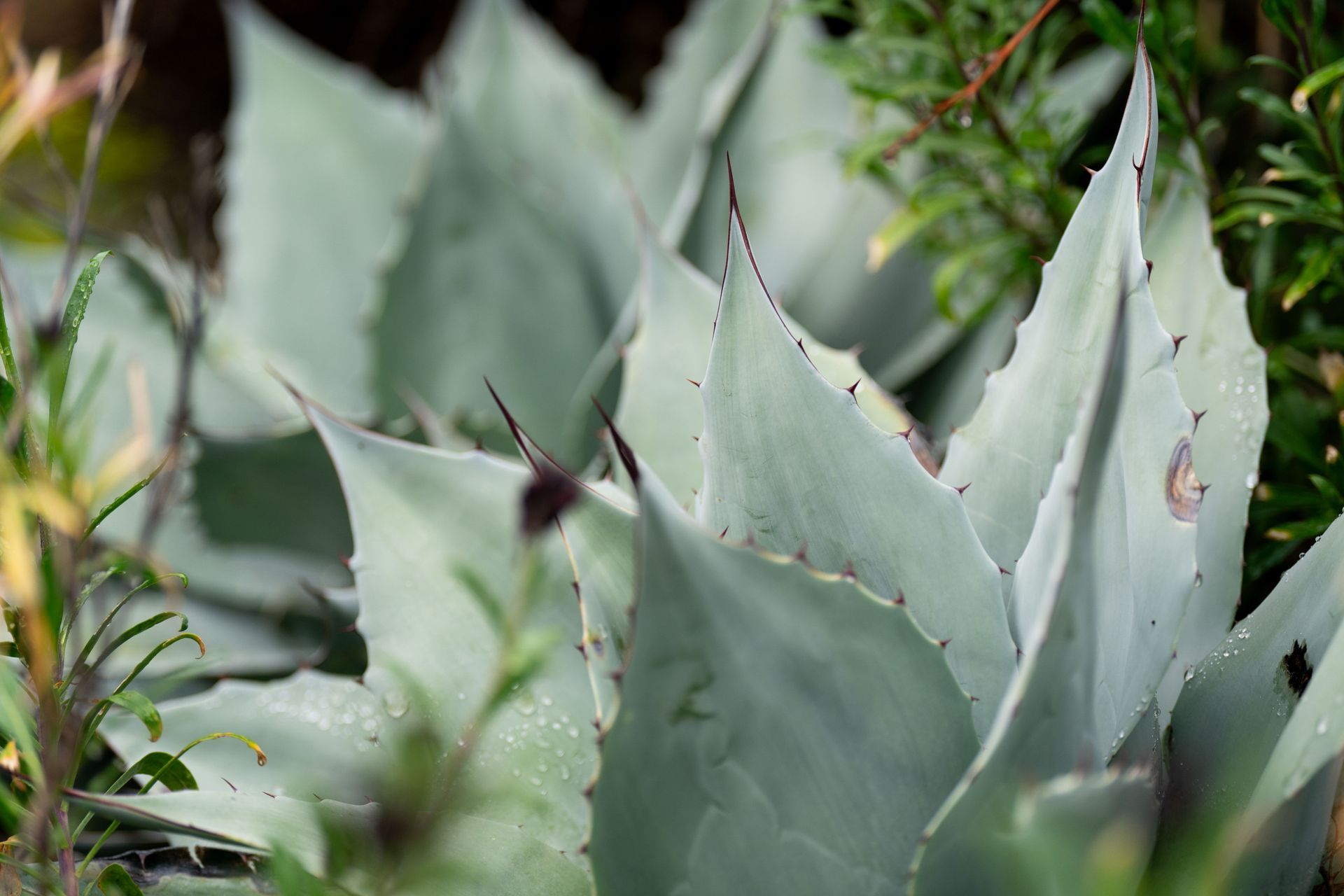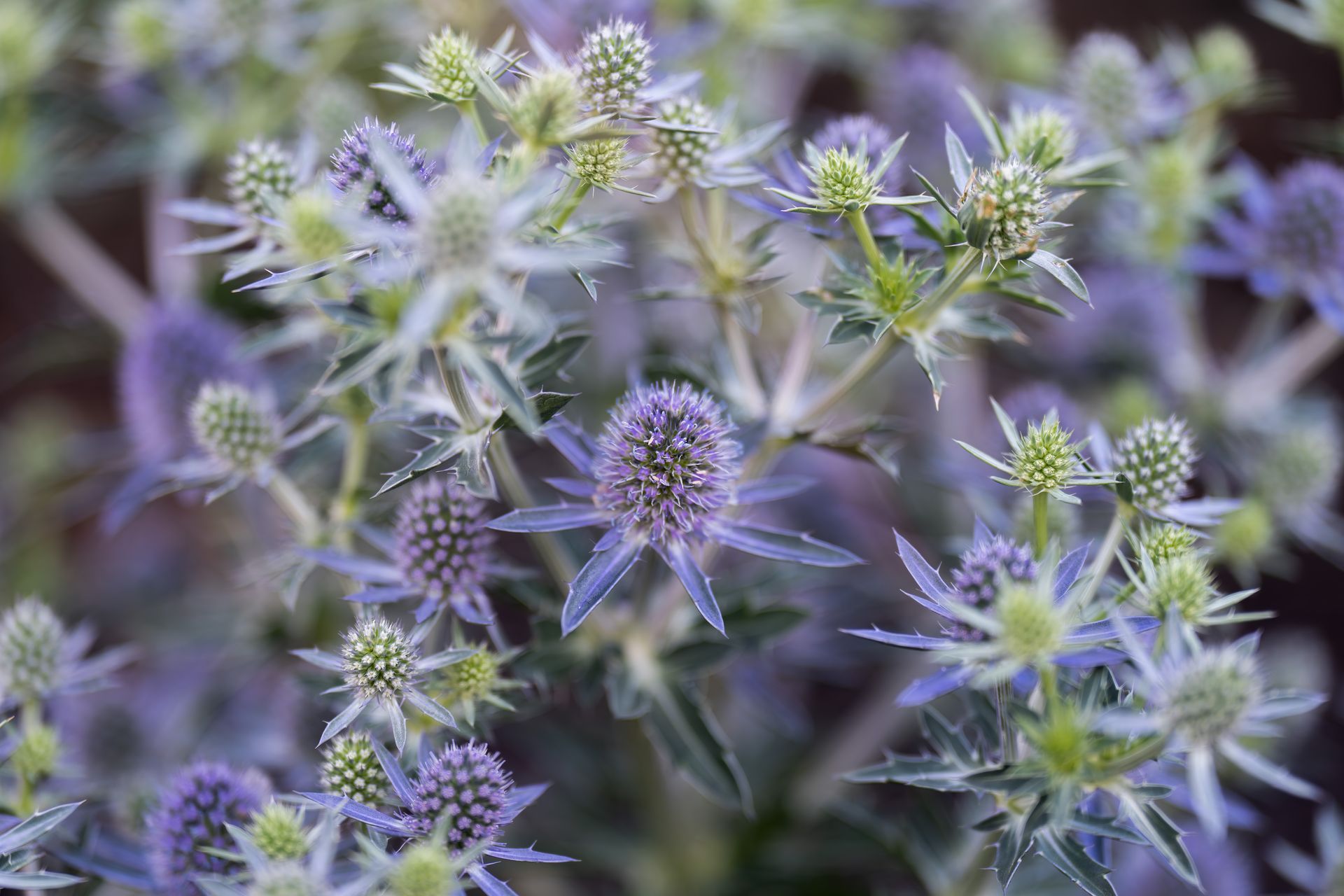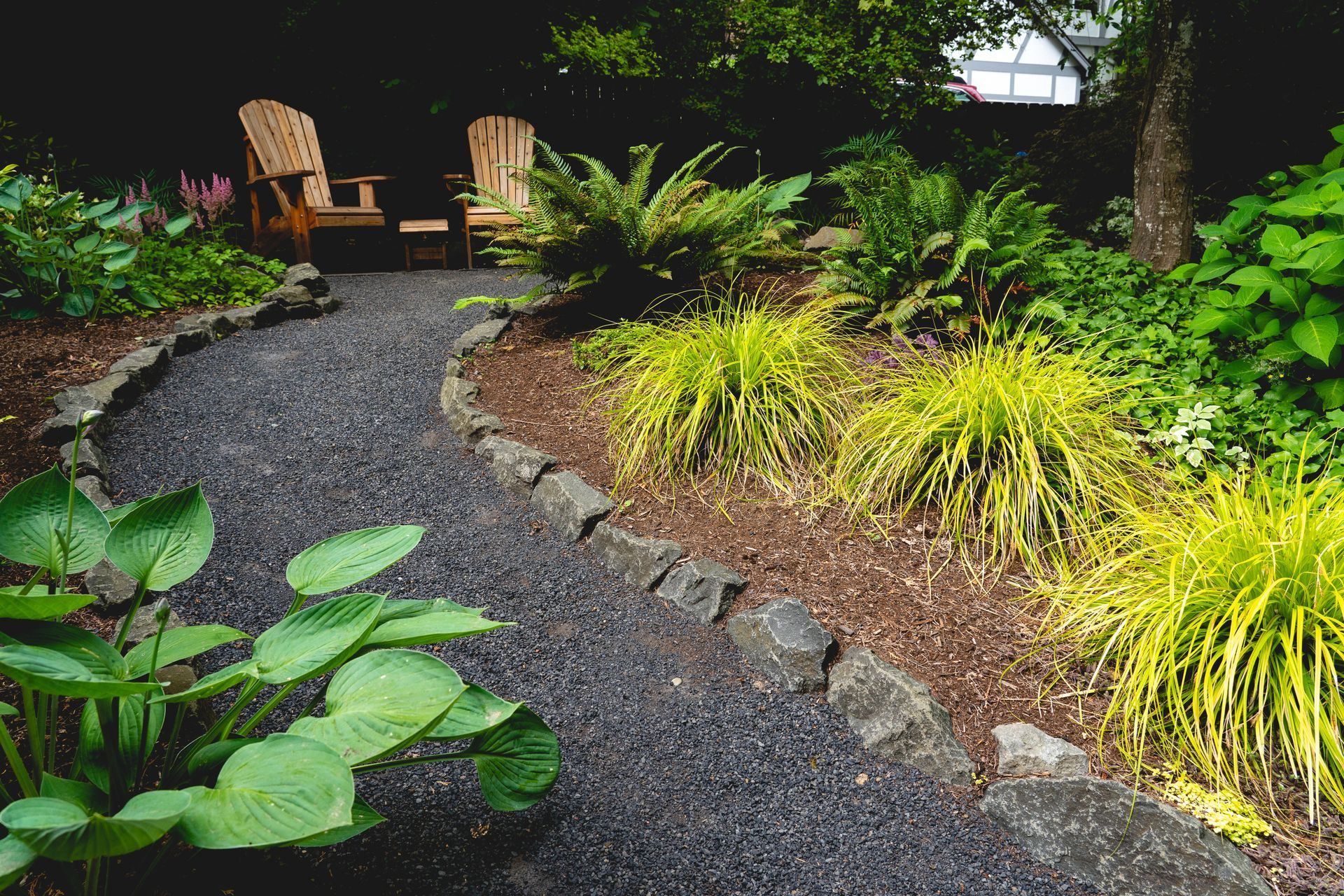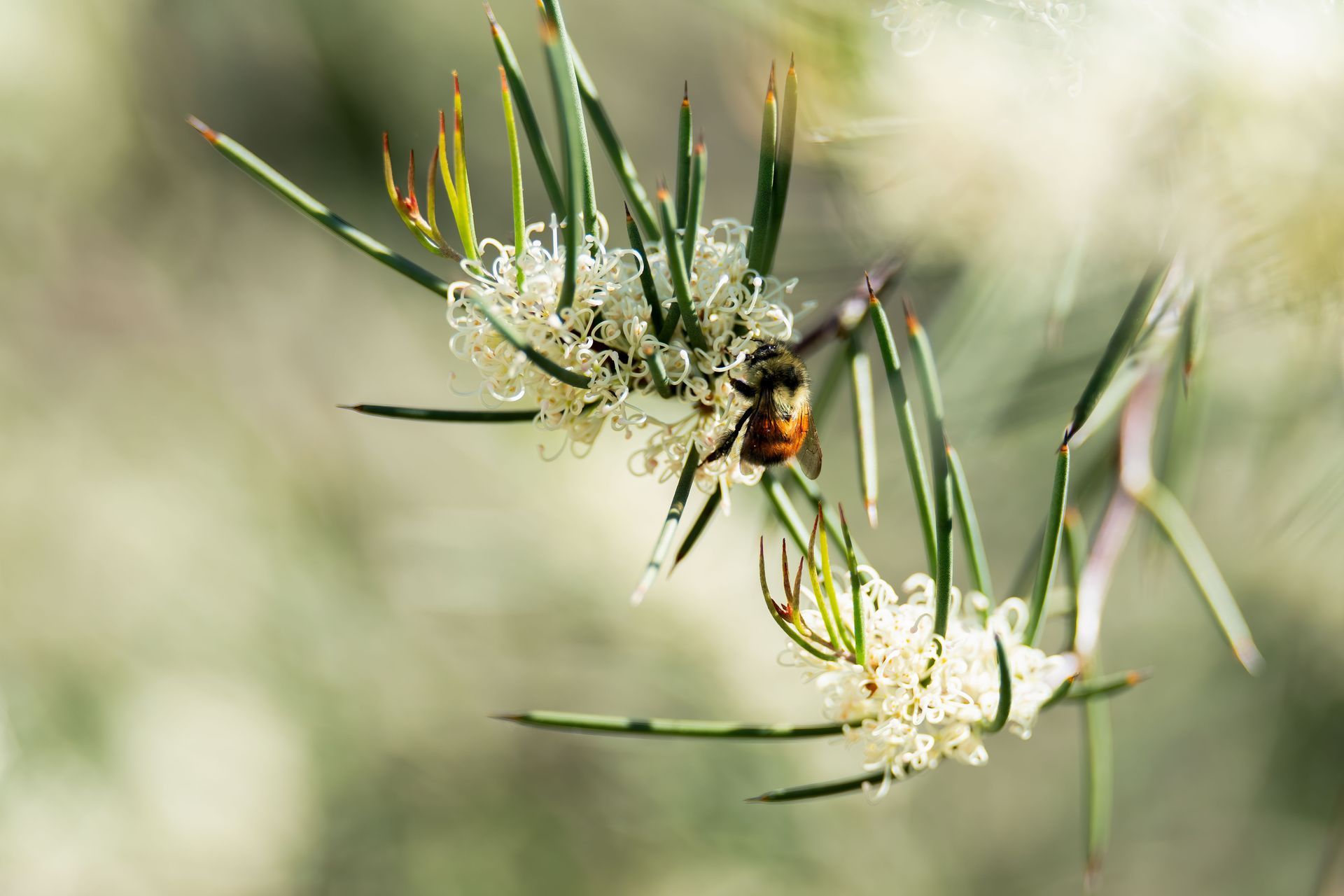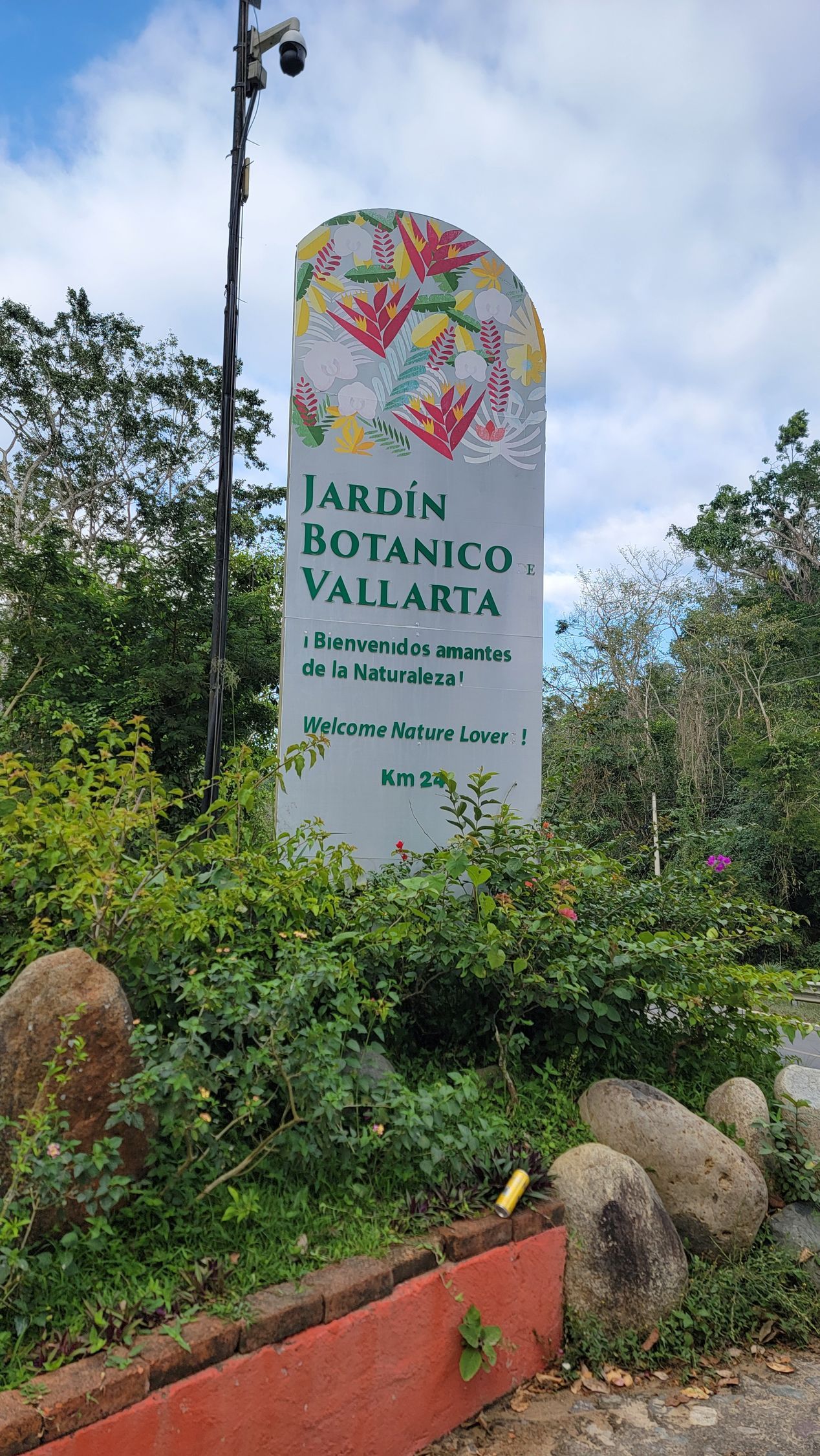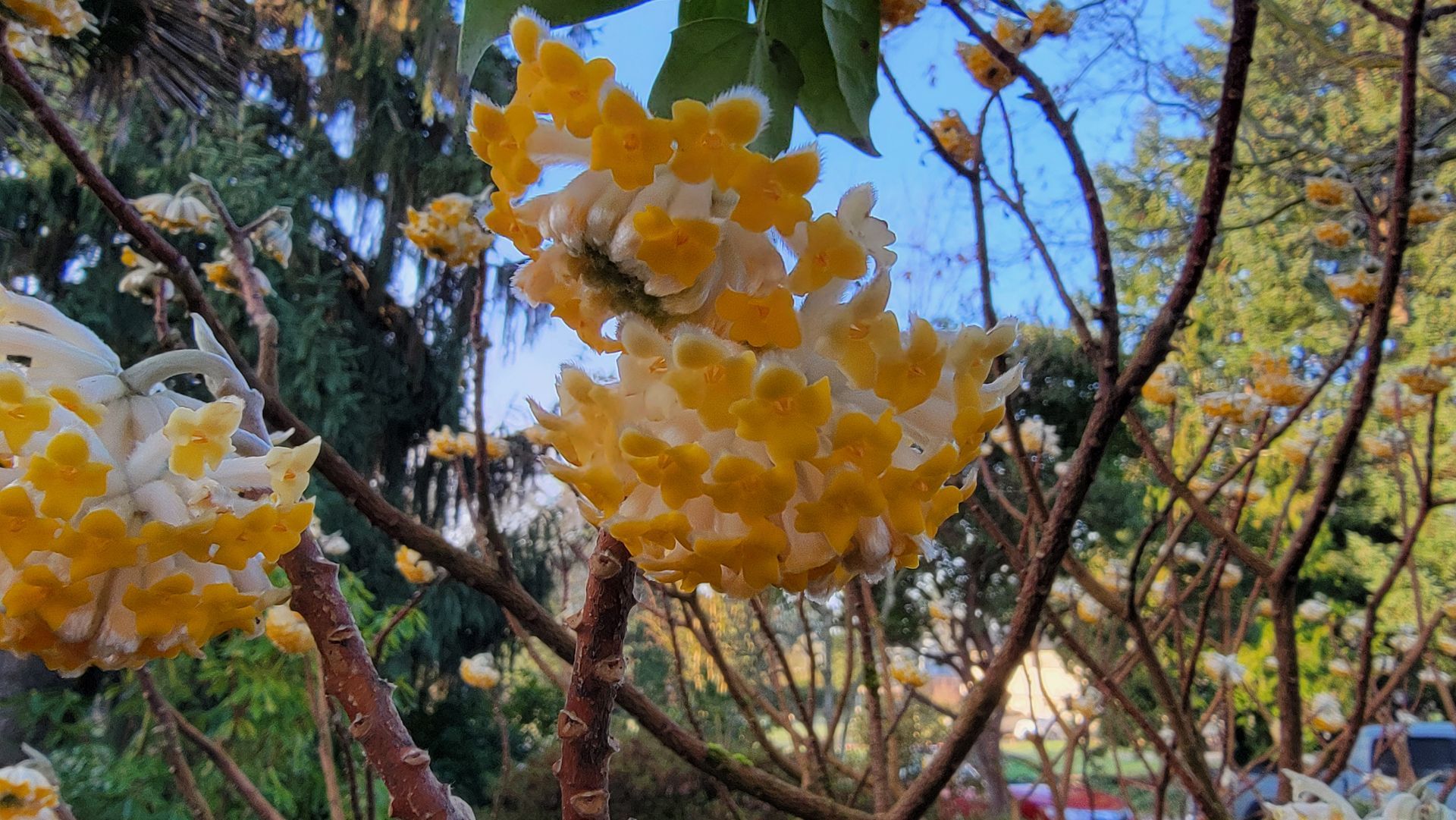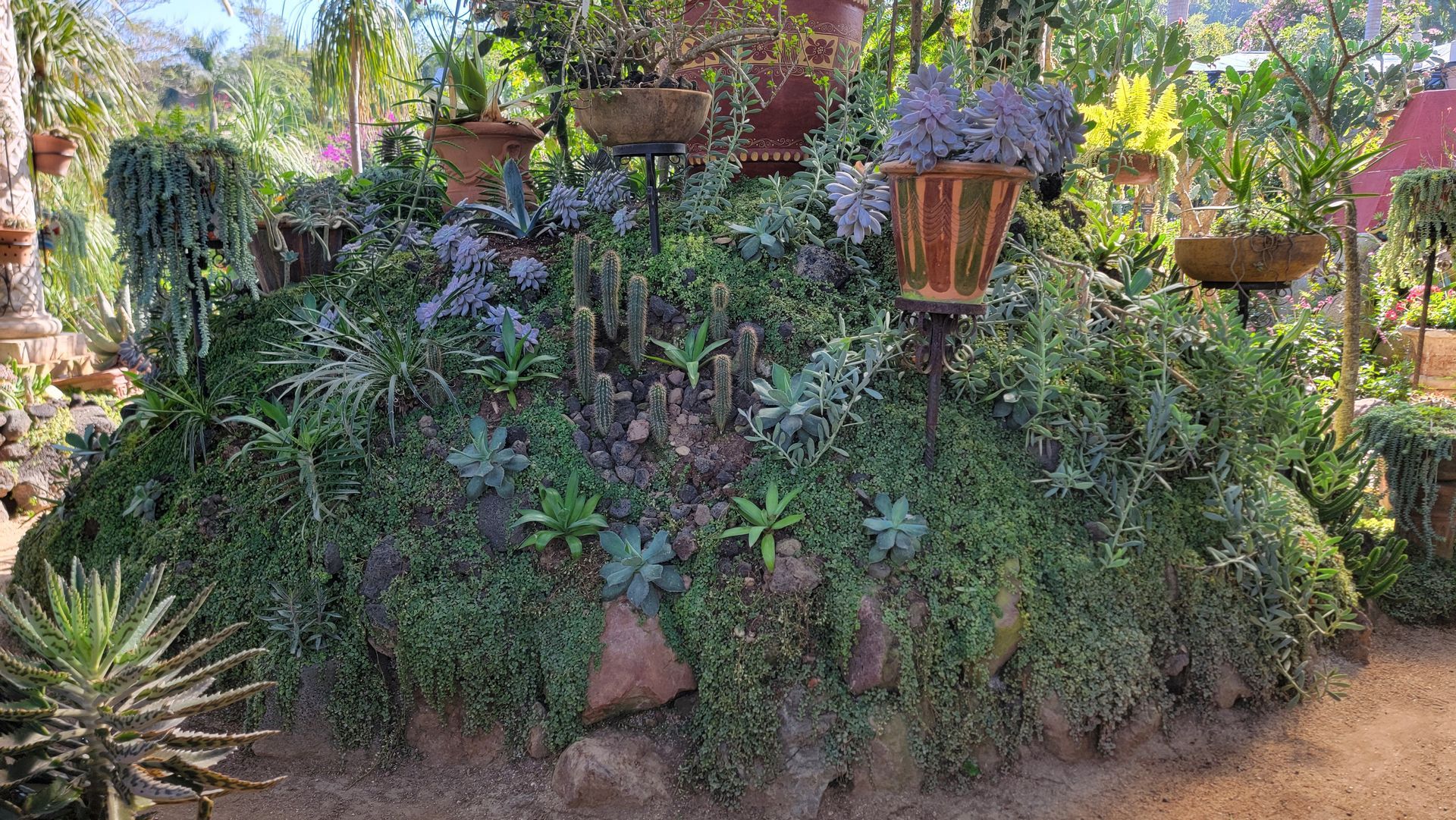Moisture: Drought or Xerophytic
We have an entire section of our garden which does not receive any augmented water unless someone hand waters. A part of this section of our garden is on a busy traffic corner and receives a lot of wind and sun. It never receives any augmented water and the soil is 50% gravel. Most of our weeds do not like to grow there.
In November 2005 I excitedly planted a small piece of a poppy directly into the gravel on a rainy wet day and poured water over it. It has since grown into what is now, in the heat of the dry season, about a 5' tall by 10' wide by 5' deep clump of exuberant foliage and bloom. It is called Romneya coulteri, whose common names are many: Matilija Poppy, Fried Egg Plant, Fire Poppy and more. In our climate it dies to the ground in a cold winter, and in a mild winter it looks very ragged but could be called evergreen. The foliage is blue-green and succulent. I cut it to the ground every January and it grows back beautifully each spring, bursting into bloom in June and then blooming sporadically into August.
This amazingly beautiful plant can be propagated two ways:
- by digging a section of root with a sprout on it, transplanting it immediately and giving it just enough water to survive but not so much that it would rot. (This has limited success. I tried it several times before it took.)
- by passing the seed pod and seeds over flame or heat and then sprouting the seeds. (This is tricky, and I have yet to succeed.)
This plant can grow, spread and bloom beautifully with no irrigation system and no dry season water. It is from the desert southwest of the USA, where it resprouts after a fire, giving it the name Fire Poppy. The 6" wide blooms consist of large white petals with bright yellow centers, giving it the name Fried Egg plant. People walking by on the road often stop to ask me what it is.
Drought tolerance varies a great deal. I have said that this plant never needs water in the dry season and wants to be in full blazing sun. However, there are many plants which can survive the summer with no augmented water. Most of our West Coast native plants are in this category.
Some of these drought tolerant plants can only survive in the shade without water. Two examples of this are Polystichum munitum (our Western Sword Fern) and Mahonia nervosa (our lowest growing Oregon Grape). They can both be found naturally growing around the base of large Doug Fir Trees receiving no water during the summer months.
There is Cornus sericea, our native Red Twig Dogwood. Once established, it can grow in full sun with no water or in marshy soil all year long.
All three plants can handle a little augmented water in the dry season.
Some drought tolerant native plants, such as most species of Ceanothus and most species of Arctostaphylos, simply cannot tolerate any summer water when it is hot. They can handle a little moisture on a cloudy, cool day in the dry season or summer.
All the named plants above, however, need augmented water to get through their first dry season or summer in our climate. The best time to plant all of them is not in the summer or spring, but in the fall. Fall, winter or the rainy season is the best time to plant any shrubs, trees of perennials in our climate. However, on a cool and cloudy day during their first summer, some augmented water always helps to secure a surer survival for even the Matilija Poppy.
Any plant which is planted during the dry season with an existing irrigation system in place will need augmented water. Many people do not understand this and wonder why the new plant which they planted in May in their irrigated garden died. That is because irrigation systems are meant to be a way to maintain plants. They must have additional water to get them to root out into the soil. When they arrive in their pots their roots are bound by the plastic. They have learned to circle the pot. When planted, it takes them some time to discover that the soil around them is not a pot, that they can grow into it and seek out moisture. Adding moisture around their root zone when planted assures that they receive enough water to root out into the surrounding soil.
When we as a company plant any plant, we puddle it in no matter what time of the year it is. Translated, this means that one waters the plant and its surrounding root zone until the soil puddles. This action assures that the soil settles in down around the roots and that there are no large air pockets which could cause the roots to dry out. It allows the surrounding soil to adhere to the soil of the new root mass. Unless it is drenching rain when planting, it is not enough water to perform this important task.

